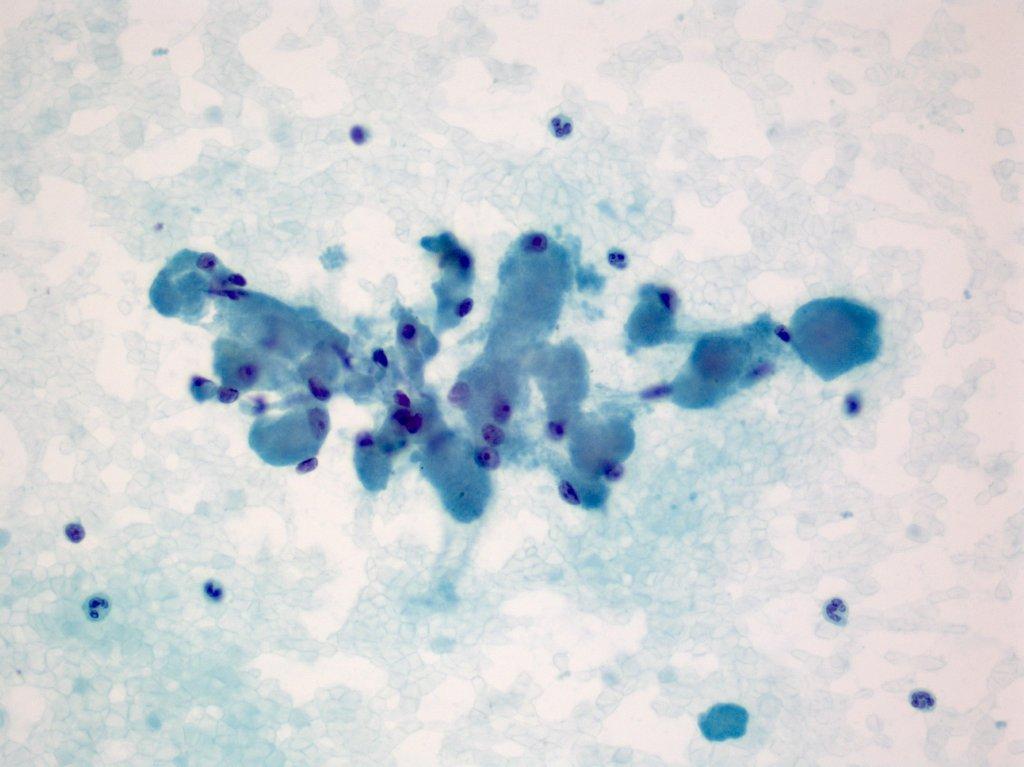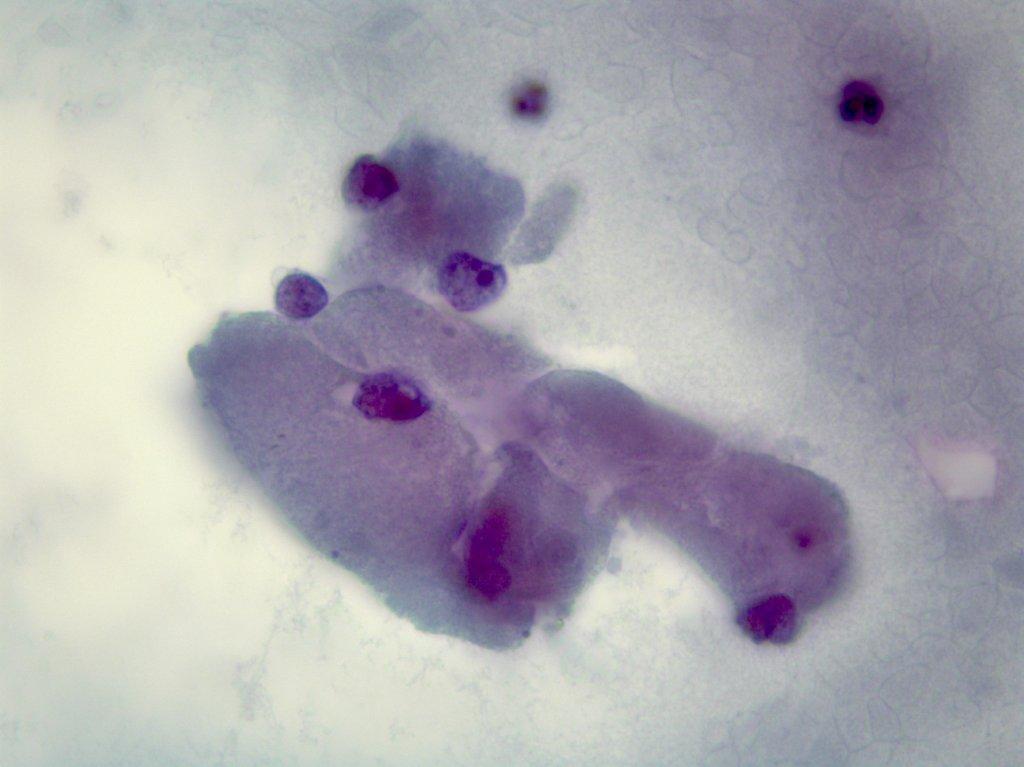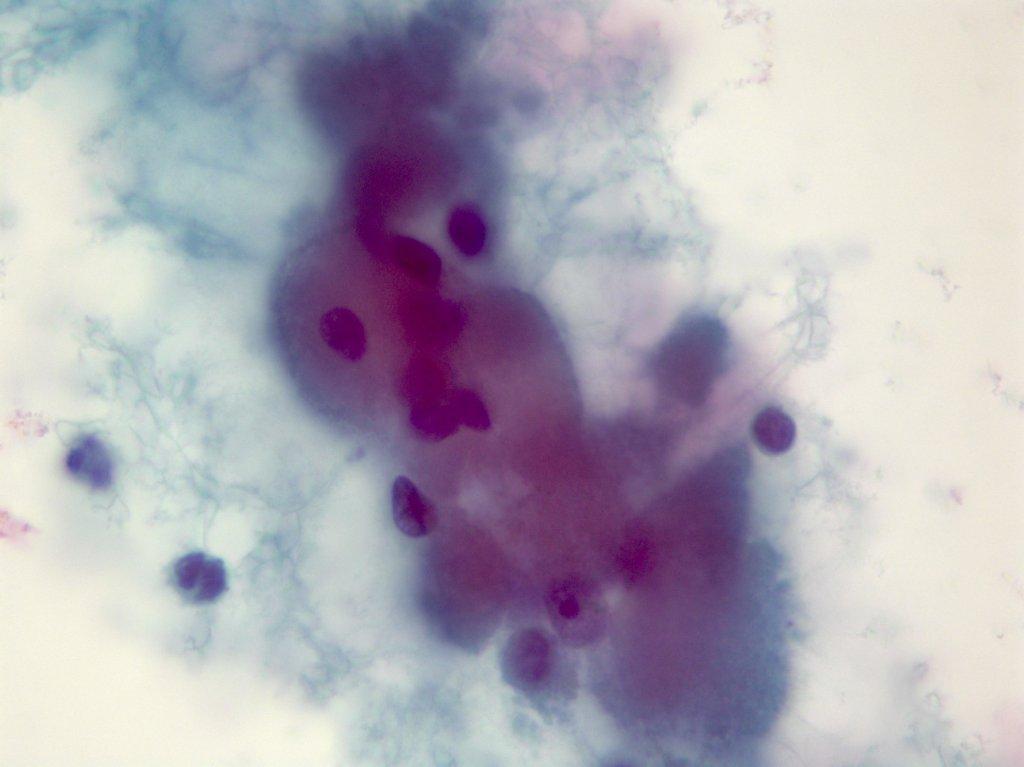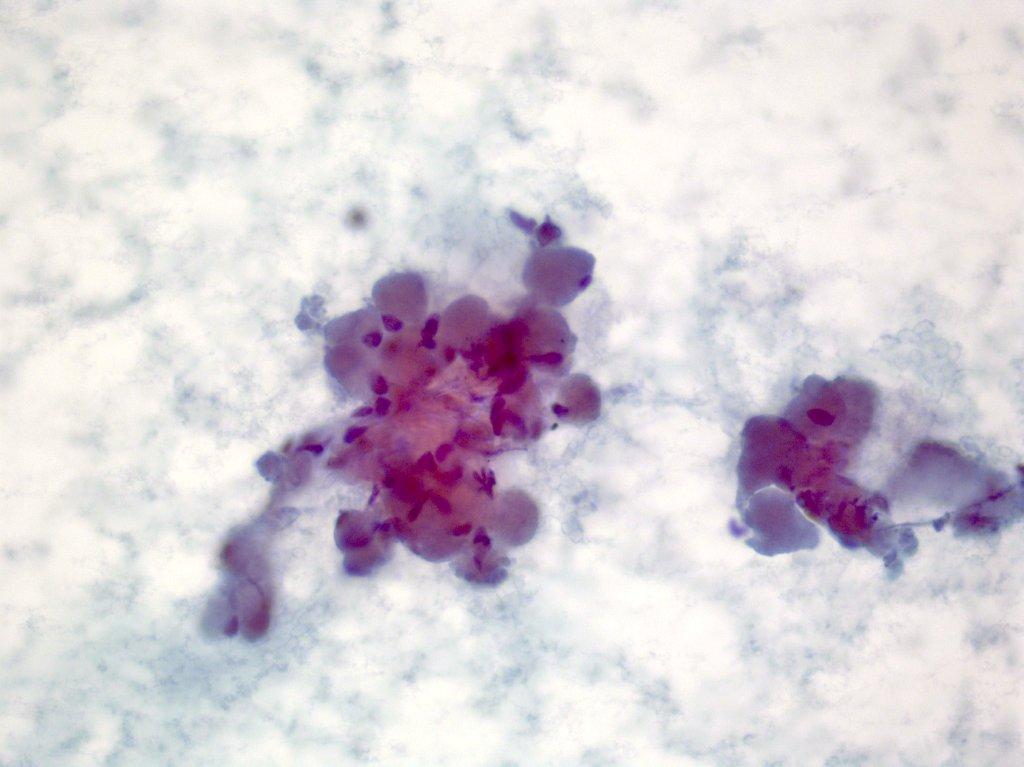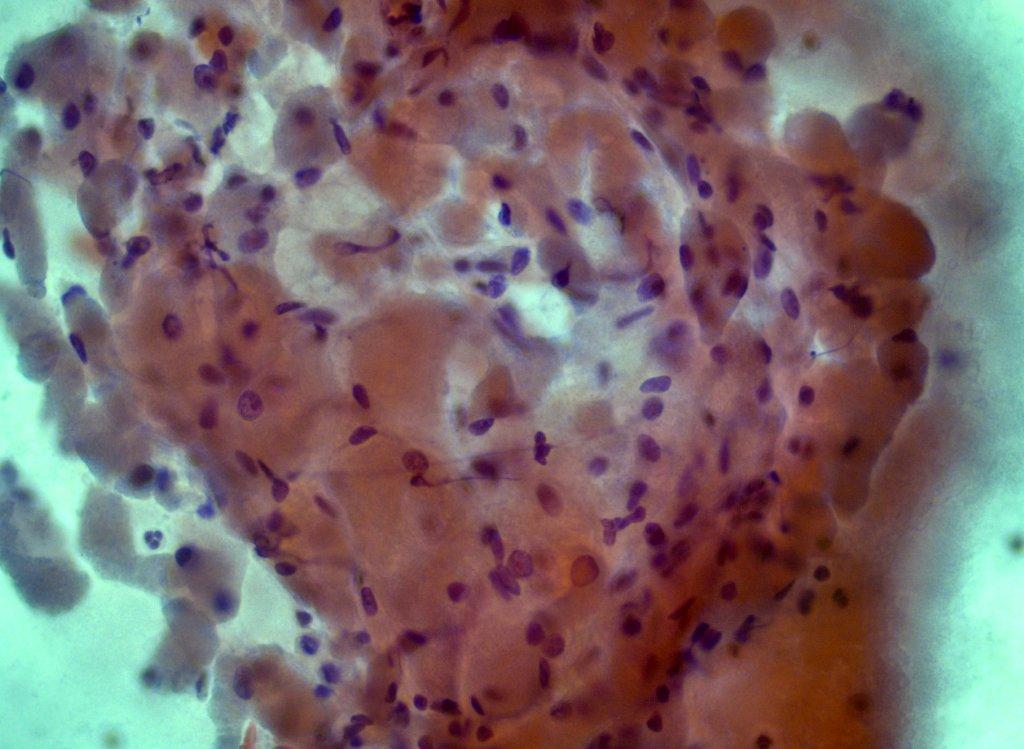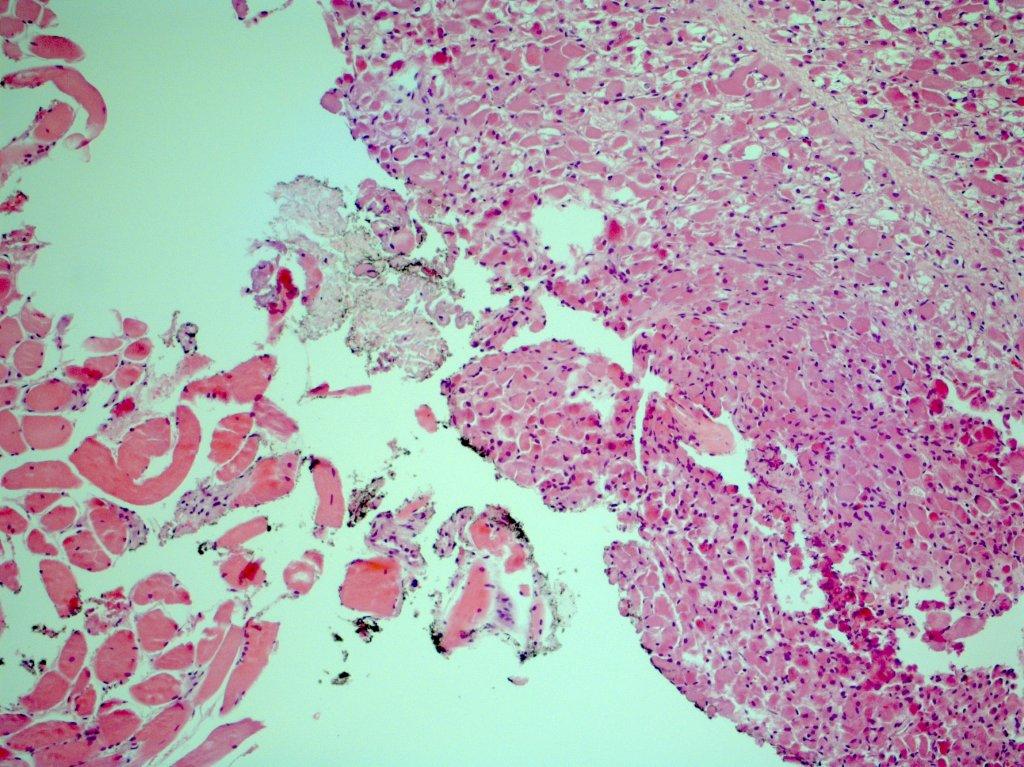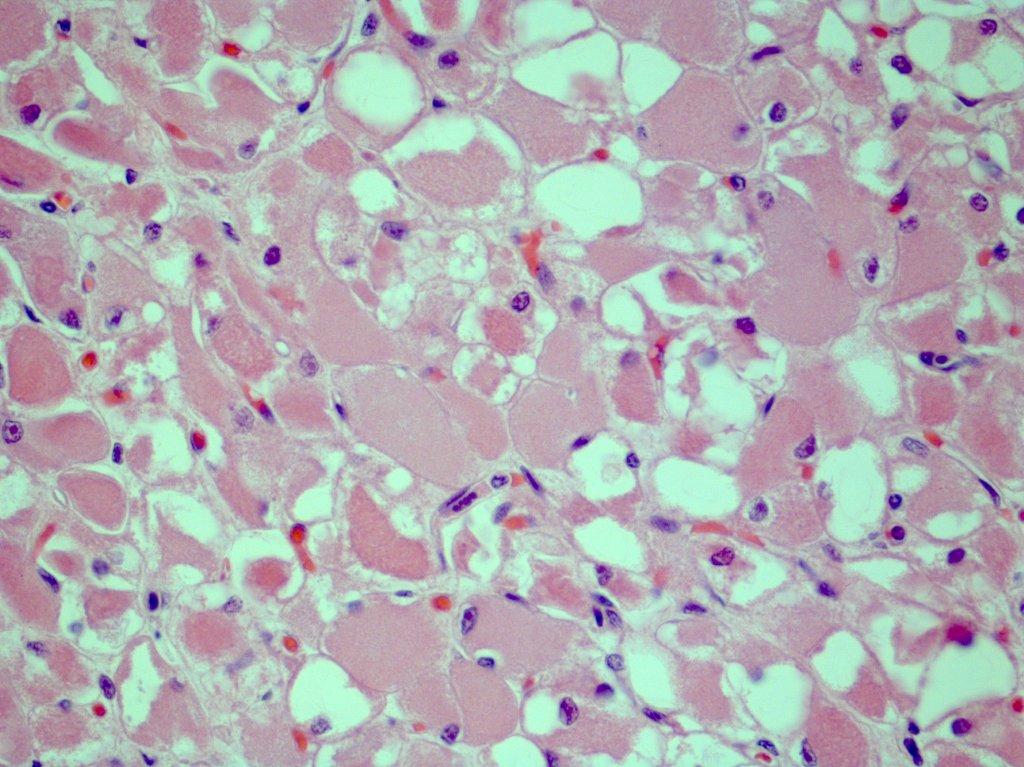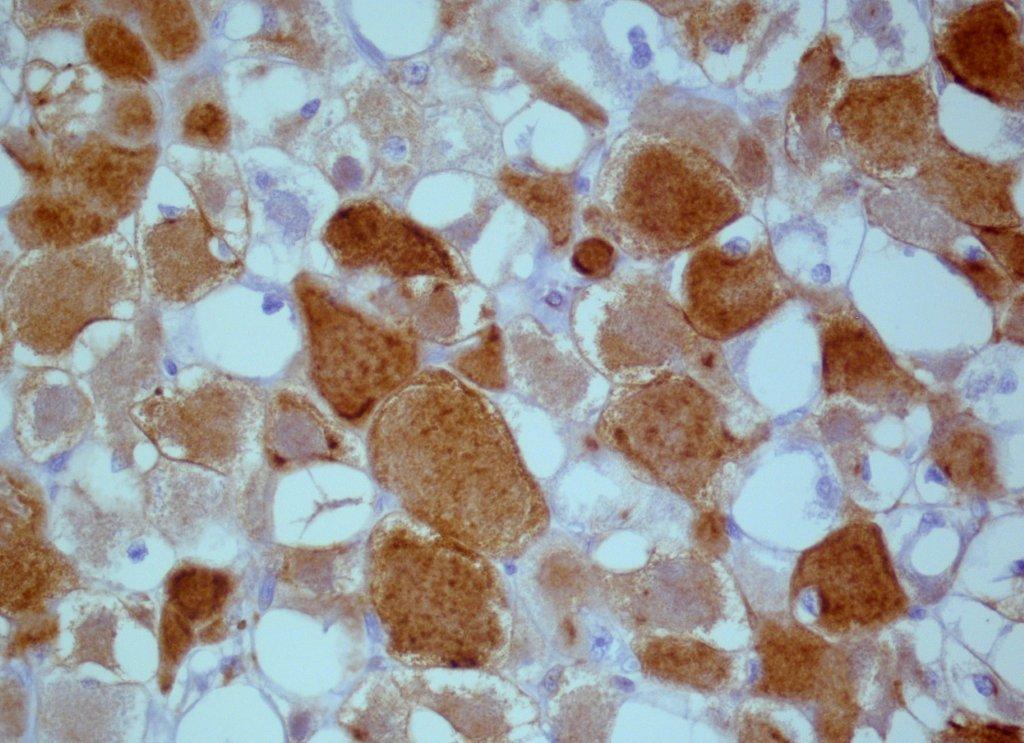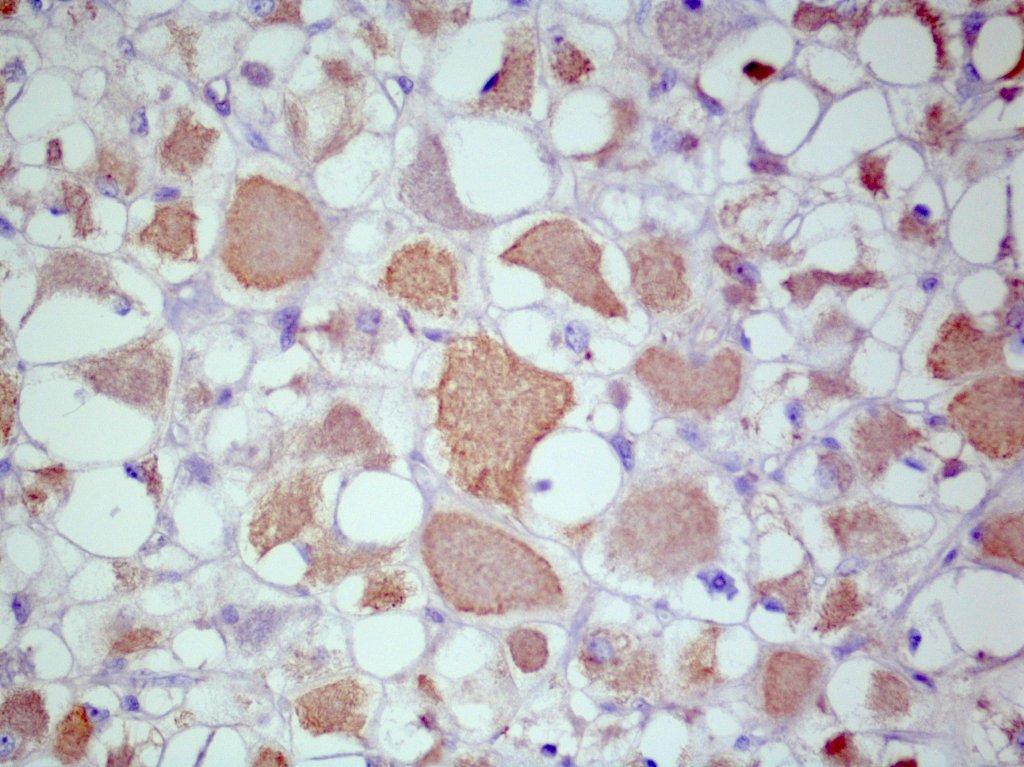4 August 2011 - Case #212
All cases are archived on our website. To view them sorted by case number, diagnosis or category, visit our main Case of the Month page. To subscribe or unsubscribe to Case of the Month or our other email lists, click here.
This case was contributed by Rachiel Oakley, M.D., Ephrata Hospital, Pennsylvania (USA).

Case #212
Clinical history:
A 70 year old man had an enlarging left thyroid nodule. Thyroid ultrasound demonstrated a lobulated hypoechoic solid mass with some vascularity. After a fine needle aspiration, the mass was resected.
Microscopic images:
What is your diagnosis?
Diagnosis: Rhabdomyoma
Immunostains:
Discussion:
The initial FNA impression was oncocytoma (Hurthle cell neoplasm). The lesion has fibrillary eosinophilic cytoplasm but no nuclear atypia, no necrosis and no mitotic activity. The lesion was immunoreactive for desmin and actin, supporting the diagnosis of a rhabdomyoma.
Rhabdomyomas are rare benign tumors with skeletal muscle differentiation (Eur J Pediatr Surg 2001;11:66). Rhabdomyomas are divided into cardiac and extracardiac types. Cardiac rhabdomyomas are associated with tuberous sclerosis. Extracardiac rhabdomyomas are further divided into fetal and adult types, based on the maturity of the muscle fibers. Both forms of rhabdomyomas tend to occur in the head and neck regions and in men more than women but a genital type also occurs in the vulva and vagina of middle aged females.
The malignant counterpart, rhabdomyosarcoma, is much more common than rhabdomyoma and is one of the more common malignant soft tissue tumors in children and young adults.
The differential diagnosis for rhabdomyoma includes granular cell tumor, hibernoma, paraganglioma and oncocytoma but all of these are negative for muscle specific actin. Also in the differential diagnosis is muscle hypertrophy or accessory muscles but location, adjacent bone overgrowth and age can aid in the correct diagnosis (Acta Cytol 2000;44:223).
All cases are archived on our website. To view them sorted by case number, diagnosis or category, visit our main Case of the Month page. To subscribe or unsubscribe to Case of the Month or our other email lists, click here.
This case was contributed by Rachiel Oakley, M.D., Ephrata Hospital, Pennsylvania (USA).

Website news:
(1) As we begin our 11th year, we thank you for your support. This year, we plan to increase the frequency of chapter updates and add more images and videos. Let us know if you have any other comments or suggestions.
(2) We are looking for reviewers for part/all of these chapters: Coagulation, Salivary Glands, Stains, Uterus; also Fallopian Tubes, Lung-tumor, Ureters, Urethra, Vagina, Vulva.
(3) We have updated the Skin-nontumor chapter based on reviews by Ha Kirsten Do, M.D., IUPUI; Mowafak Hamodat, MB.CH.B, MSc., FRCPC, Eastern Health, St. Johns (Canada); Nat Pernick, M.D., PathologyOutlines.com, Inc. and Cecilia Rosales, M.D., Baylor College. Over the next several months, we will be adding more images and references to these topics.
Visit and follow our Blog to see recent updates to the website.
(1) As we begin our 11th year, we thank you for your support. This year, we plan to increase the frequency of chapter updates and add more images and videos. Let us know if you have any other comments or suggestions.
(2) We are looking for reviewers for part/all of these chapters: Coagulation, Salivary Glands, Stains, Uterus; also Fallopian Tubes, Lung-tumor, Ureters, Urethra, Vagina, Vulva.
(3) We have updated the Skin-nontumor chapter based on reviews by Ha Kirsten Do, M.D., IUPUI; Mowafak Hamodat, MB.CH.B, MSc., FRCPC, Eastern Health, St. Johns (Canada); Nat Pernick, M.D., PathologyOutlines.com, Inc. and Cecilia Rosales, M.D., Baylor College. Over the next several months, we will be adding more images and references to these topics.
Visit and follow our Blog to see recent updates to the website.
Case #212
Clinical history:
A 70 year old man had an enlarging left thyroid nodule. Thyroid ultrasound demonstrated a lobulated hypoechoic solid mass with some vascularity. After a fine needle aspiration, the mass was resected.
Microscopic images:
What is your diagnosis?
Click here for diagnosis and discussion:
Diagnosis: Rhabdomyoma
Immunostains:
Discussion:
The initial FNA impression was oncocytoma (Hurthle cell neoplasm). The lesion has fibrillary eosinophilic cytoplasm but no nuclear atypia, no necrosis and no mitotic activity. The lesion was immunoreactive for desmin and actin, supporting the diagnosis of a rhabdomyoma.
Rhabdomyomas are rare benign tumors with skeletal muscle differentiation (Eur J Pediatr Surg 2001;11:66). Rhabdomyomas are divided into cardiac and extracardiac types. Cardiac rhabdomyomas are associated with tuberous sclerosis. Extracardiac rhabdomyomas are further divided into fetal and adult types, based on the maturity of the muscle fibers. Both forms of rhabdomyomas tend to occur in the head and neck regions and in men more than women but a genital type also occurs in the vulva and vagina of middle aged females.
The malignant counterpart, rhabdomyosarcoma, is much more common than rhabdomyoma and is one of the more common malignant soft tissue tumors in children and young adults.
The differential diagnosis for rhabdomyoma includes granular cell tumor, hibernoma, paraganglioma and oncocytoma but all of these are negative for muscle specific actin. Also in the differential diagnosis is muscle hypertrophy or accessory muscles but location, adjacent bone overgrowth and age can aid in the correct diagnosis (Acta Cytol 2000;44:223).

